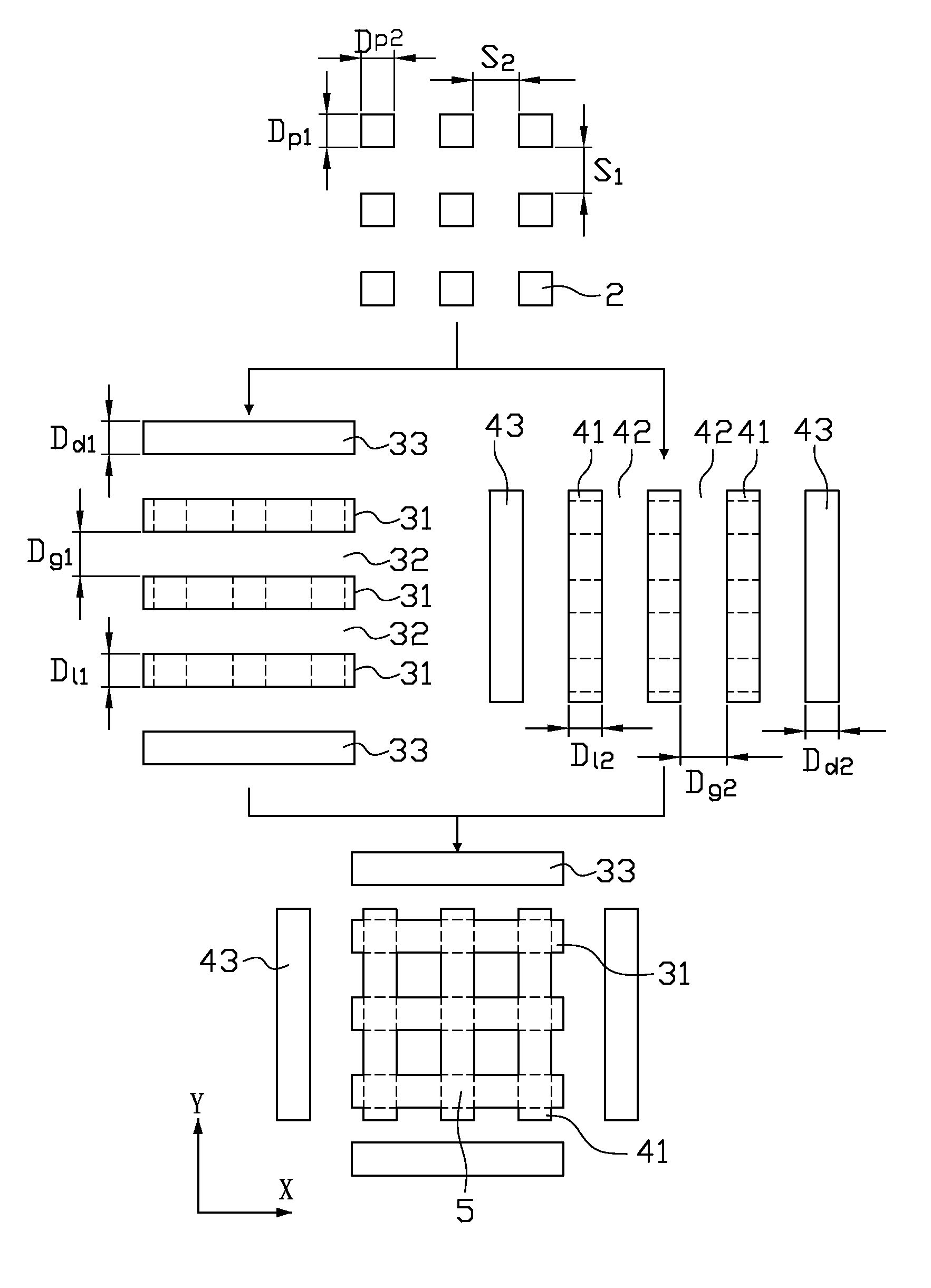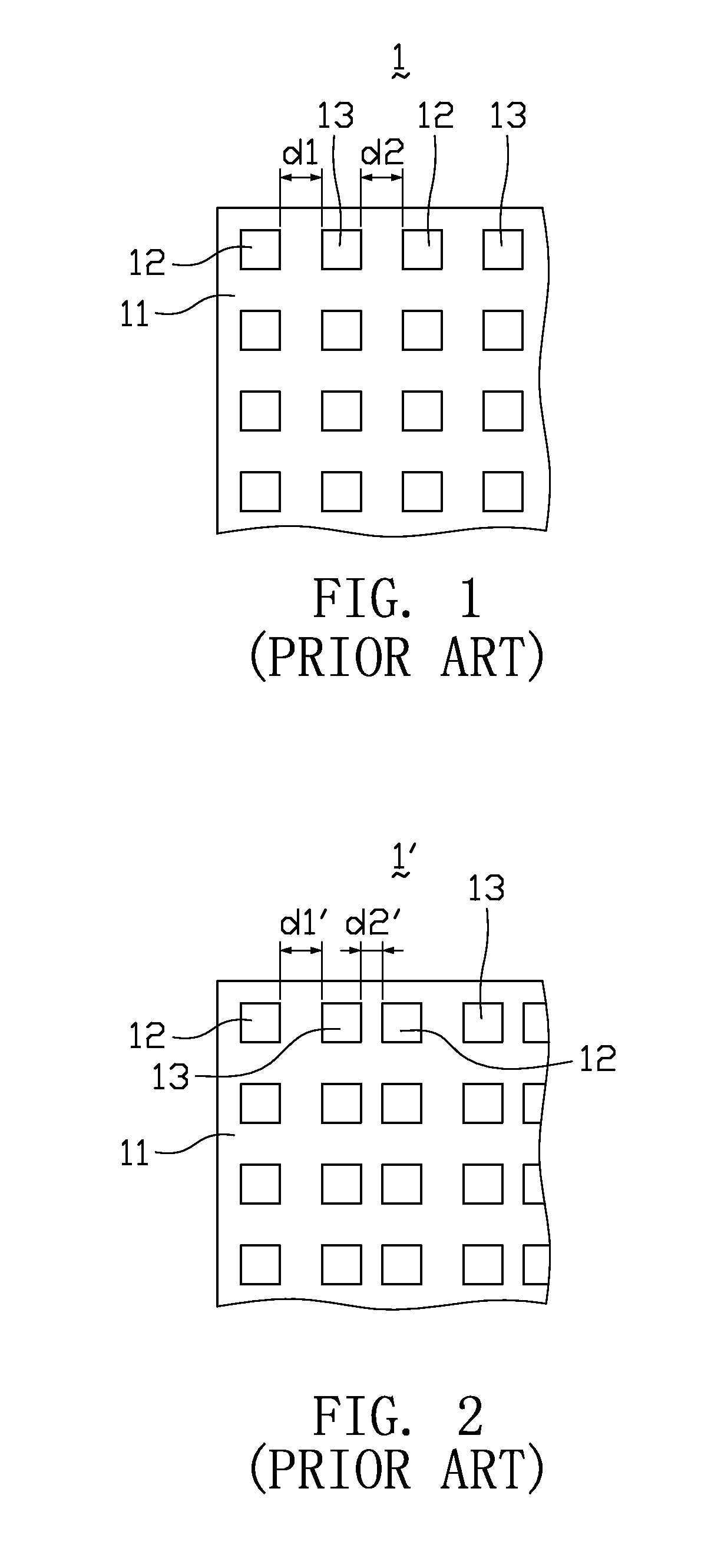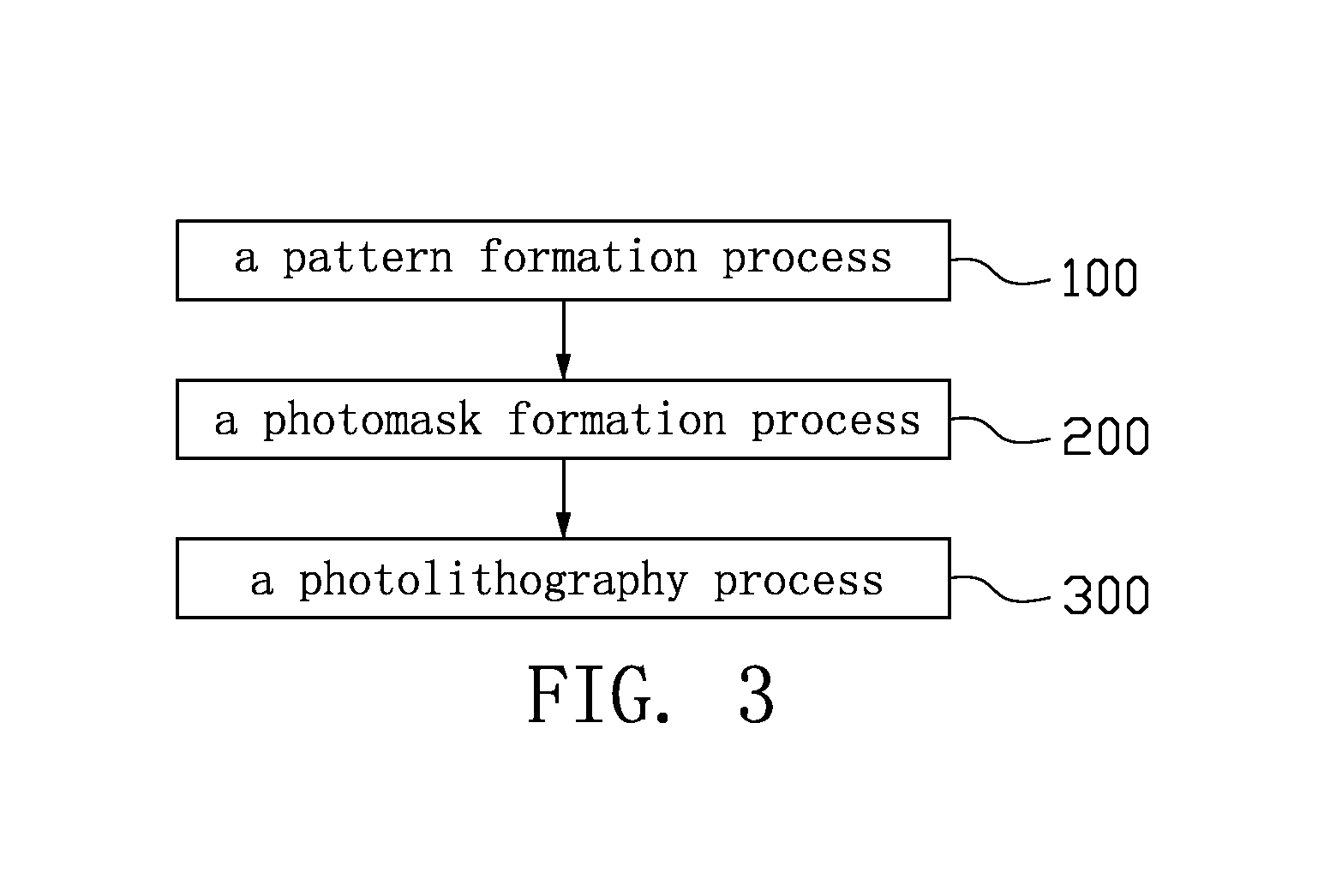Method for double patterning lithography and photomask layout
- Summary
- Abstract
- Description
- Claims
- Application Information
AI Technical Summary
Benefits of technology
Problems solved by technology
Method used
Image
Examples
Embodiment Construction
[0021]The present invention will now be described more specifically with reference to the following embodiments. It is to be noted that the following descriptions of preferred embodiments of this invention are presented herein for purpose of illustration and description only. It is not intended to be exhaustive or to be limited to the precise form disclosed.
[0022]According to the present invention, a method for double patterning lithography can be applied to a substrate, for example, a semiconductor substrate, to form a plurality of trenches in a plurality of predetermined positions correspondingly. It should be understood that the word “trench” as used in this context herein is used broadly such that it can indicate any type of an opening, a gap, a cavity, a hole, an empty space, or the like that can later be filled with a material, as discussed below. The method for double patterning lithography has an improved function of critical dimension shrinkage, with a wider tolerance range...
PUM
 Login to View More
Login to View More Abstract
Description
Claims
Application Information
 Login to View More
Login to View More - R&D
- Intellectual Property
- Life Sciences
- Materials
- Tech Scout
- Unparalleled Data Quality
- Higher Quality Content
- 60% Fewer Hallucinations
Browse by: Latest US Patents, China's latest patents, Technical Efficacy Thesaurus, Application Domain, Technology Topic, Popular Technical Reports.
© 2025 PatSnap. All rights reserved.Legal|Privacy policy|Modern Slavery Act Transparency Statement|Sitemap|About US| Contact US: help@patsnap.com



